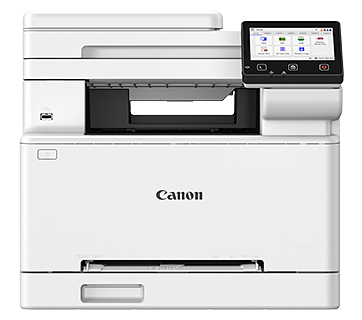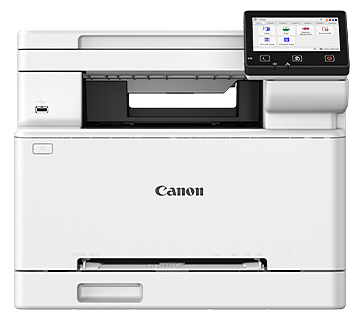
SMEs can benefit from riding the wave of Internet of Things (IoT)
Even if some of us are still strangers to the acronym “IoT,” we may already have experienced the start of the ongoing IoT revolution. IoT is at work when we use a fitbit to record and transmit data when we exercise and sleep. IoT powers smart appliances present in some homes today, where we can control them remotely via a smartphone app.
Soon, the effects of IoT will be pervasive, wide-reaching and unlimited to the territory of big businesses, and SMEs in Singapore can leverage on these four factors in the environment to tap on it: high smartphone penetration, expanded internet connectivity, access to low-cost sensors and tremendous governmental support for IoT initiatives.
For SMEs to tap into the advantages and business apps offered by IoT, they should be open-minded and adaptable to be ready to ride on the waves of opportunities that this digital phenomenon offers.
How IoT is helping businesses today
IoT powers machine-to-machine automation and generates big data, which help businesses optimise processes automatically, minimizing waste.
For instance, it is not a lucky coincidence that ATMs that run out of cash have become a rare occurrence today. DBS bank, one of the earliest adopters of real-time big data, analyses withdrawal data to understand the varying demands for cash at different locations, minimizing the number of empty ATMs by more than 80 per cent.
Machine-to-machine automation powered by IoT has the potential to help carry out labour-intensive tasks, in turn solving the pressing problem of labour shortage that many SMEs face. IT consultancy Accenture demonstrated this with unmanned aerial vehicles (UAVs) capturing data from remote locations to give real-time insights on a 100 km oil pipeline, reducing inspection time from four days to only seven minutes.
IoT products and networks also allow businesses to amass and analyze a large amount of personalized data that can offer meaningful consumer insights.
For instance, IoT wearables can help patients with chronic diseases keep the hospital informed about their vital statistics while they stay at home, lightening the load on the healthcare infrastructure. At the same time, the wearables contribute to data generation with a large sample size. This kind of data – big data – can be used in statistical research to improve healthcare.
These examples are only the tip of the iceberg. As IoT proliferates across industries such as manufacturing, retail, hospitality, transport, insurance, SMEs can and need to ride the wave to remain relevant.
The future of IoT for SMEs
Change is truly the only constant in this IoT world, and speed is key. Even with resource limitations, there are several areas from which SMEs can start to explore.
Governmental grants
A good starting point for SMEs is to check out the various government grants available for small businessesseeking to innovate technologically.
One useful grant would be the ICT for Productivity and Growth programme, which consists of initiatives that encourage piloting emerging solutions “in the areas of sensor, data analytics and robotics”. SMEs who want to pursue IoT capabilities can apply for this grant, which subsidises 80% of the qualifying pilot project costs, up to $1 million per SME. The Infocomm Development Authority (IDA) will reimburse the SMEs directly upon completion of agreed milestones.
Big Data
Consumer mindsets are shifting to expect IoT-enabled features in everyday products. This means large amounts of big data are being collected, which can be used for consumer analysis. However, the cost of obtaining and storing big data is a major roadblock for many SMEs.
Nonetheless, SMEs who want to tap on data can strategize and identify useful data points, and experiment with free or low-cost alternatives before committing additional resources. Options like Google analytics account or sandbox versions of paid cloud services are commitment-free alternatives to test the usefulness of big data for optimizing a business.
Investing in hardware for the future
Security risks may seem daunting for SMEs who want to take on IoT solutions, but the market is also offering a barrage of security solutions like advanced firewalls that encrypt networks for data security.
SMEs can also start with investing in office hardware products that are “future-proof”. Some office hardware products today now have IT security features to cater to forward-thinking businesses in the age of big data. Take for instance, Canon’s Maxify range of printers designed for small offices have features like advanced LAN settings to guard against inappropriate use to maintain data confidentiality.
If you have a mid-size company with a few printers, the Simple Network Management Protocol (SNMP) setting helps ensure a secured networking and administration of printers with multi-device management and monitoring via popular fleet management applications. This keeps your network secure, and secondarily, you can also monitor the print jobs from employees, helping to cut costs where necessary.
Additionally, Maxify printers also help to improve productivity with single pass automatic document feeder (ADF). Two sides of one sheet of paper can be scanned at the same time. Printing documents from cloud and scanning to cloud will also help to improve efficiency of your business.
Training
Last of all, advancing in the era of IoT will necessitate up-skilling employees to stay relevant and cultivating an innovative culture that constantly seeks to transform existing business models.
On a parallel track, training on IT security should be provided as well. Security patches for computer security are widely available, but everyday devices with IoT may be vulnerable to security risks that we are not ready for. Advanced training for tech staff becomes is therefore extremely crucial.
Being an SME is a double-edged sword. Although there may be resource constraints, SMEs can take advantage of their lean structure to adopt IoT solutions that will highly optimise their businesses.
This advertorial is brought to you by Canon.
Canon’s Maxify range of small-office printers offer you:
- At least 50% lower cost per print for XL ink cartridges
- Security features to ensure data confidentiality, like advanced LAN settings and SNMP
- Increased productivity with settings like single pass ADF and printing/scanning from cloud services
Enjoy Cashback promotion with purchase of any MAXIFY Business Colour Inkjet Printers from Canon Eshop.








